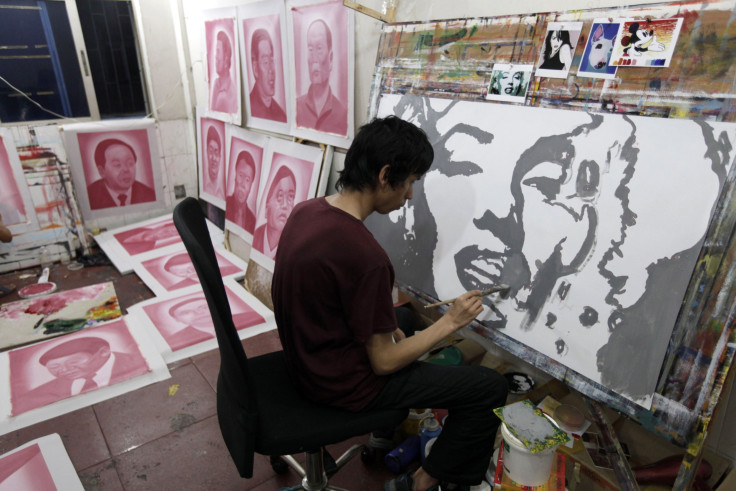A Village Of Van Goghs: Chinese Migrant Workers Produce Copycat Art To Fuel Local Economy

One village in China is taking an artistic spin on “Made in China” to keep the local economy robust. Migrant workers in the village of Dafen have been dubbed “Van Gogh on Demand” for producing more than 100,000 copycat paintings a year.
Dafen is an urban village located within the city limits of Shenzhen, home to thousands of rural migrant workers who make a living from producing copycat paintings that find their way to Chinese hotel rooms or the homes of Western tourists visiting China, the Wall Street Journal reported on Thursday. The villagers are also the subject of a recent book “Van Gogh on Demand,” from the art historian and professor of rhetoric at the University of California, Berkeley, Winnie Wong.
“There’s a current vibe in China about the ‘Chinese dream,’” Wong said in an interview, in reference to a slogan Chinese President Xi Jinping popularized. “The Dafen story kind of anticipated this because it’s a story about migrant workers who have reached their dream and are simultaneously artists. That’s what’s so tantalizing.”
Wong first became interested in the village’s unique industry when she visited in 2006 and saw migrant workers learning how to paint by copying Western masterpieces by the likes of Vincent van Gogh, which inspired the title of Wong’s book. Contrary to Wong’s expectations of assembly line-style factories producing cheap art, she found individual proprietors who were producing streetscapes and images of flowers that were not necessarily cheap.
“Most of the workers don’t have a formal arts education,” Wong said, according to the Wall Street Journal. “But my book argues that we should understand them pretty much as we understand all artists, no matter where they’re based, or what context or market they’re working for.”
As research for the book, Wong immersed herself in the village, working as an apprentice painter and dealer to learn the villagers’ production process.
“Every painting is made by order, so the price depends on how long it takes to create,” Wong said. “It is possible to order a very realistic portrait for the same price that you might pay in a Chelsea gallery, though you could also find something for a dollar or two.”
Many artists within China and elsewhere, along with the media, have been critical of the art produced in Dafen. Wong attributed it to a “fear that everything is replaceable,” and that if everyone is capable of producing art, nobody will hold the privilege of being a great painter, the Wall Street Journal reported.
© Copyright IBTimes 2025. All rights reserved.





















